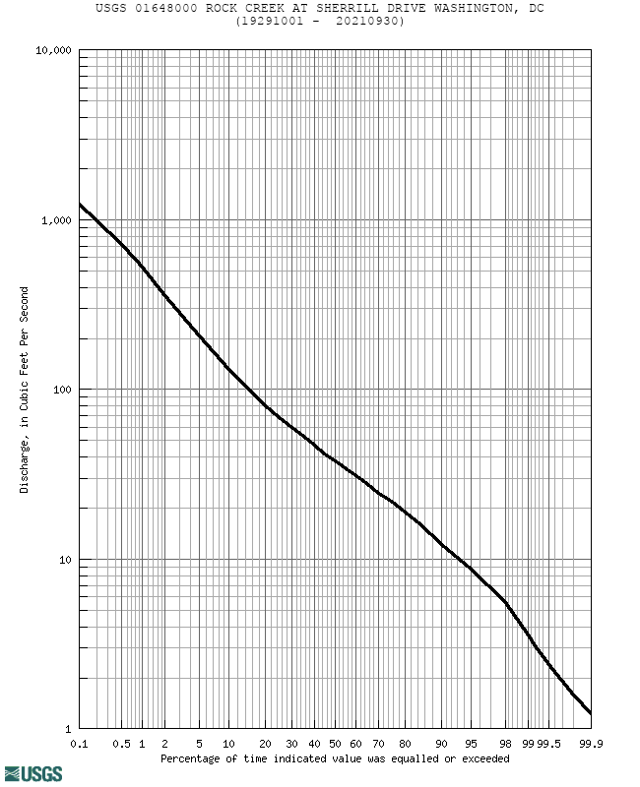You are here
Science Resources: Water and the Law
How Can Hydrologists Forecast Water Supply and Demand?
Good management of a water system depends on being able to forecast the amount of supply and demand in that system. Like many natural systems, the amount of water in a river, lake, or reservoir is stochastic, i.e., mathematically uncertain. Hydrologists model stochastic systems by looking back at the historical record to estimate the probability that a given amount of rainfall (or streamflow) will occur in a specific area in a given timeframe. They then use those historical observations to make statistical predictions about the likely amount of flow in a river, using a tool called a Flow-Duration-Curve (FDC). An FDC shows the percentage of time when a flow in a river is equal to or above a specific flow value [19].
Using historical data to forecast future flows can be problematic. Sometimes, the historical record is not representative, leading to a skewed perception of the amount of water in the system. A good example of this is the original allocation of water in the Colorado River compact, which was based on a water year with an unusually high level of flow in the river [22].
Assuming stationarity can also lead to biased forecasts based on the historical record. Stationarity means that there is no abrupt shift or gradual trend in the time series of the data. In the context of water management, this would mean there is no meaningful change in the statistical properties of the data over time. With climate change impacting the distribution of precipitation and streamflow, the assumption of stationarity for these data may no longer hold true.
[19] T. Cech, Principles of Water Resources: History, Development, Management, and Policy, 3rd ed., Wiley & Sons, 2009.
[22] G. McCabe and D. Wollock, “Warming may create substantial water supply shortages in the Colorado River Basin,” Geophysical Research Letters, vol. 34, p. L22708, 2007.

